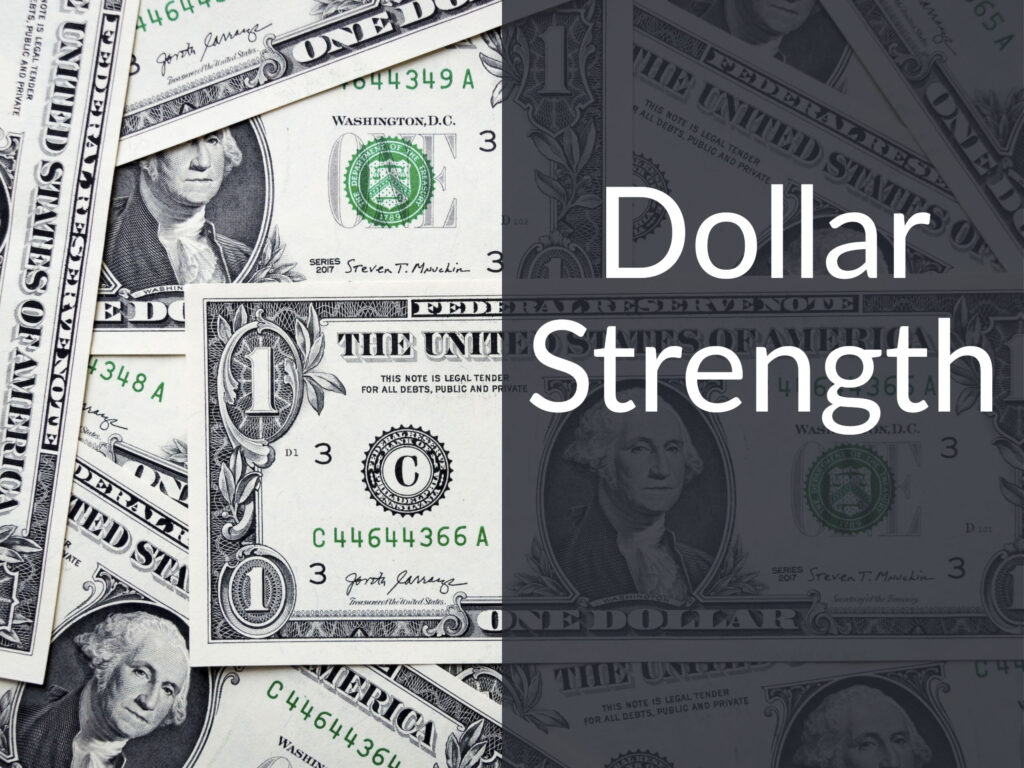What has caused the U.S. dollar’s currency exchange rate to be the strongest in twenty years? How a strong dollar leads to slower global economic growth and falling asset prices.

Topics covered include:
- Why a strong dollar is a no-win situation for the rest of the world
- Why have inflation and interest rates increased
- Why recession risks are rising as central banks combat inflation
- Why asset prices fall when interest rates rise
- What would cause the U.S. dollar to weaken from these levels
- How to protect against currency fluctuations
Show Notes
Monetary policy challenges posed by global liquidity by Hyun Song Shin—BIS
Dollar beta and stock returns by Valentina Bruno, Ilhyock Shim and Hyun Song Shin—BIS
Wonking Out: The Mysteries of the Almighty Dollar by Paul Krugman—The New York Times
Stop looking for a bogeyman to explain sterling’s collapse by Kate Martin—Financial Times
Episode Sponsors
Related Episodes
215: Is A Dollar Collapse Coming?
338: The National Debt, Inflation, and the U.S. Dollar—What Could Go Wrong?
364: Should You Hedge Your International Stock Exposure Against Currency Fluctuations?
Transcript
Welcome to Money For the Rest of Us. This is a personal finance show on money, how it works, how to invest it, and how to live without worrying about it. I’m your host, David Stein. Today’s episode, 404. It’s titled, “Why is the US Dollar so Strong? Will it Continue?”
How Strong Is the US Dollar
The US Dollar is the strongest it has been since the year 2000. By strong I mean the US dollar is worth more when converting it to a different currency. The US Dollar can buy more when you exchange it and then try to buy things in a different country.
A strong US dollar means imports into the US are cheaper, and exports from US to other countries are more expensive, including the massive food exports that the US sends around the world.
Last week in our weekly email newsletter, The Insider’s Guide, I wrote about how Japan hadn’t opened up its country to let in foreign visitors. The next day they did. And a few days after that, my son, my oldest son, booked a trip to Japan.
I mentioned he’d been trying to get back there for a number of years but wasn’t able to. It’s an excellent time to travel to Japan because the Yen is the weakest it’s been relative to the US dollar since 1998, which means Camden’s money will go further when he visits Japan here in a few weeks.
Last week, the British Pound fell 4% relative to the dollar in one day. King Dollar is how Financial Times columnist Kate Martin put it. Eswar Prasad, an economics professor at Cornell wrote “For the rest of the world, it’s a no-win situation.” The strong dollar is what he’s referring to.
Patricia Cohen in the New York Times wrote “In Nigeria and Somalia, where the risk of starvation already lurks, a strong dollar is pushing up the price of imported food, fuel, and medicine. The strong dollar is nudging debt-ridden Argentina, Egypt, and Kenya closer to default, and threatening to discourage foreign investment in emerging markets like India and South Korea.”
What happened such that the US dollar is so dominant, so strong? Just four years ago, in episode 215—that episode was titled “Is a Dollar Collapse Coming?” We reviewed the work of Peter Schiff, who felt that the dollar was going to weaken tremendously against other currencies. Instead, the US dollar is 20% stronger today than it was back in 2018. We want to review what’s going on with the dollar relative to other currencies. What are those forces, and what, if anything, can we do about it?
How We Got Here
Let’s revisit how we got to where we are. We had the pandemic, and that led to some supply shocks; the ability for businesses to ship, to produce, because so many had COVID—that constrained supply. It constrained the ability of companies to produce. Now, we’ve also had some supply shocks this year from Russia. Its invasion of Ukraine has disrupted global supply, particularly for natural gas flowing out of Russia to Europe. The price of natural gas has skyrocketed.
We’ve also had demand shocks. With COVID, there was a shift in demand toward goods, patio furniture, for example; other things for people’s homes, rather than services, like the ability to travel. Now we’re seeing more travel, and that has pushed up the price of airfares and hotels.
As a Money For the Rest of Us Plus member, you are able to listen to the podcast in an ad-free format and have access to the written transcript for each week’s episode. For listeners with hearing or other impairments that would like access to transcripts please send an email to jd@moneyfortherestofus.com Learn More About Plus Membership »
